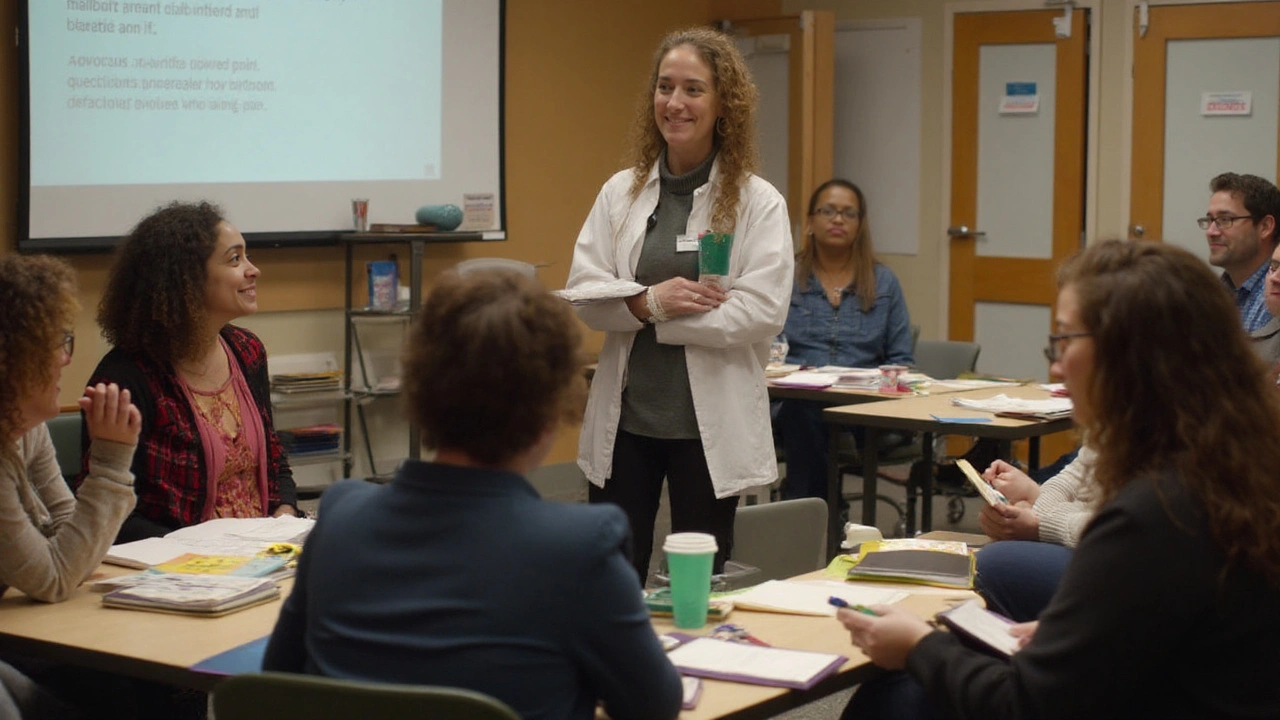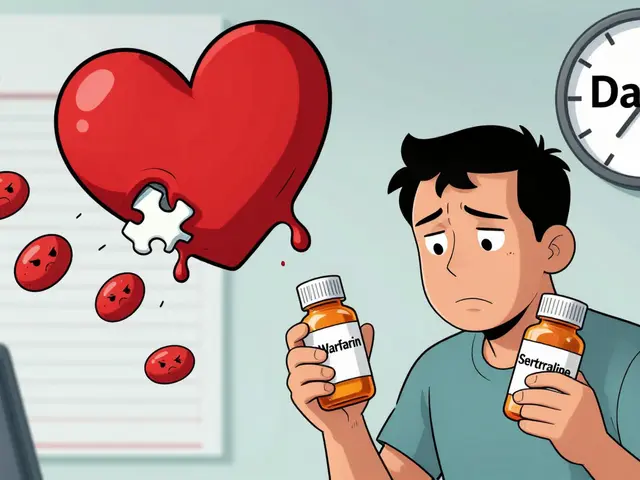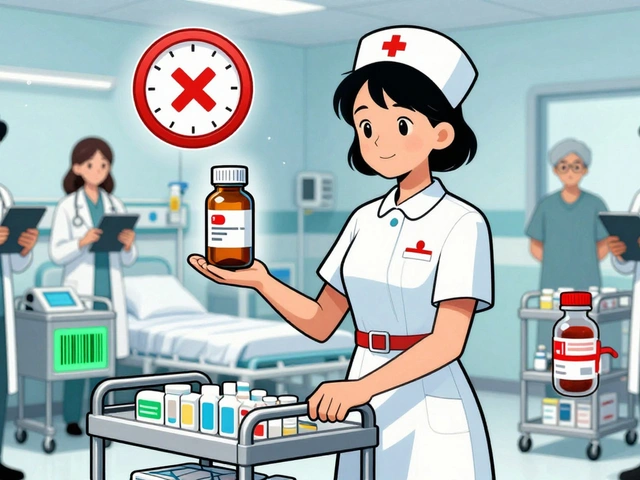
If period pain keeps knocking you out of work, study, sport, or sleep, the problem isn’t just the pain-it’s the silence around it. Too many people get told to “toughen up” when they actually need medical care. The fix starts with clear, confident requests for help that lead to real treatment. That’s what this guide gives you: a simple plan to speak up, be taken seriously, and get the right next steps.
Why it matters and what to expect from this guide
TL;DR
- Severe menstrual cramps (dysmenorrhea) that disrupt daily life aren’t “normal.” They deserve assessment and treatment.
- Advocating for yourself isn’t about arguing; it’s about making your symptoms measurable and your requests specific.
- Bring a symptom log, ask for evidence-based options (NSAIDs, hormonal therapies, TENS, heat), and know when to seek a referral.
- If you’re dismissed, try specific scripts, escalate politely, and get a second opinion.
- Red flags (fainting, severe pain suddenly worse than usual, fever, pregnancy concerns) need urgent care.
Here’s the deal. Painful periods are common, but life-halting pain is not. Primary dysmenorrhea often responds to early, correctly timed NSAIDs and heat. When it doesn’t, secondary causes like endometriosis or adenomyosis might be in play. Globally, endometriosis affects about 1 in 10 people of reproductive age, and diagnosis can lag for years. In Australia, efforts through national plans have aimed to shorten that delay, but many still wait too long. That’s where effective self-advocacy changes the game.
| Condition/Measure | Best Estimate | Notes |
|---|---|---|
| Primary dysmenorrhea prevalence | 50-90% | Common in teens and young adults; severity varies. |
| Severe dysmenorrhea (missed activities) | ~10-25% | Associated with school/work absenteeism. |
| Endometriosis prevalence | ~10% | Among reproductive-age people who menstruate. |
| Average delay to endometriosis diagnosis | ~6-8 years | Reported across multiple countries, including Australia. |
Medical bodies keep repeating a simple point:
“Menstrual pain that limits daily activities is a clinical problem that warrants evaluation and treatment.” - American College of Obstetricians and Gynecologists (ACOG)
So we’ll do three things here. First, make it crystal clear when to seek help and how to prepare. Second, give you scripts, step-by-step requests, and what to do if you hit a wall. Third, bundle it into checklists, FAQs, and next steps so you can act today, not next year.

How to advocate: step-by-step, scripts, and what to ask for
Job 1: Decide if your pain needs medical assessment
- Your pain interferes with school, work, sleep, sport, or social plans.
- You need regular painkillers for more than 1-2 days each cycle, or they barely help.
- New or worsening pain, pain between periods, pain with sex, bowel/bladder pain, heavy bleeding, or fertility concerns.
- Red flags: fainting, fever, severe one-sided pelvic pain, pregnancy concerns, or vomiting so you can’t keep fluids down. Seek urgent care.
Job 2: Make your symptoms measurable (1-week prep)
Even a single cycle of tracking helps. Use your phone notes or a simple chart:
- Cycle day and flow: light/medium/heavy; clots Y/N; flooding or needing double protection.
- Pain score (0-10) by time of day; when it peaks; how long it lasts; what helps.
- Medications: name, dose, time taken, relief (0-10), side effects.
- Impact: missed work/school hours, cancelled plans, sleep loss, sport missed.
- Other symptoms: nausea, diarrhoea/constipation, pain with sex, back/leg pain.
- Fertility context: trying to conceive or not; contraception used.
Job 3: Book the right appointment and set the agenda
- Ask the clinic for a “long appointment to discuss menstrual pain.” In Australia, GPs can bill longer consults; this signals you need time.
- Bring your symptom log and two clear goals (example: “I want better pain control this cycle” and “I want assessment for endometriosis if first steps don’t work”).
- Consider bringing a support person if it helps you stay focused.
Job 4: Use specific, confident language (scripts you can copy)
- Opening: “My period pain is X/10 for Y days and I’ve missed Z days of work/school in the last three months.”
- What you’ve tried: “I took ibuprofen 400 mg every 6-8 hours for two cycles starting 24 hours before bleeding. Relief was 3/10.”
- Request a plan: “I’d like a stepwise plan today-including anti-inflammatories timed correctly, heat or TENS, and a discussion of hormonal options. If that isn’t enough, I want a referral to a gynaecologist to assess for endometriosis.”
- When dismissed: “This pain stops me from functioning. Can we document a plan and timeline for review? If things don’t improve, I’d like a second opinion.”
- Imaging clarity: “I understand ultrasound can miss endometriosis. If my symptoms persist, can we plan a referral regardless of imaging?”
Job 5: Know your treatment options and how to ask for them
This is not medical advice, but it’s a practical map of standard, evidence-based options you can discuss with your clinician. Always check your personal risks, allergies, and other meds.
- NSAIDs (anti-inflammatories). Well studied for period pain. The timing matters: start 24 hours before expected bleeding or at first cramp, then use regular dosing for 48-72 hours. If over-the-counter doses don’t help, ask about alternatives or prescription-strength dosing that’s safe for you. Avoid if you have certain stomach, kidney, or bleeding risks.
- Mefenamic acid. Often used specifically for menstrual pain in some countries. Ask if it’s suitable for you.
- Hormonal options. Combined pills, progestin-only pills, the levonorgestrel IUD, or other methods can reduce pain and flow. If you’re trying to conceive now, skip this and discuss non-hormonal routes.
- Heat therapy. Simple and effective; wearable heat patches can help.
- TENS. A small device that delivers a mild electrical current; some people find strong relief.
- Tranexamic acid. Not a painkiller, but reduces heavy bleeding when that’s part of the problem.
- Addressing comorbidities. Bowel or bladder symptoms may need joint care with gastro or urology.
- Lifestyle add-ons. Sleep, regular movement, low-impact exercise, and stress tools won’t cure severe disease, but they can improve pain thresholds.
- When to escalate. If you’ve trialled first-line options with poor relief, ask for a gynaecology referral. In Australia, that starts with your GP; private vs public wait times vary.
Job 6: Keep follow-up tight and time-bound
- Book a follow-up in 6-8 weeks or after two cycles to review response.
- Track: pain scores, days missed, medication doses, side effects. If no meaningful change, escalate the plan.
- Make it explicit: “If this doesn’t help by our follow-up, we’ll refer me to a gynaecologist.” Get that in your notes.
Evidence signals you can quote
- ACOG and NICE recognise NSAIDs and hormonal therapy as first-line treatments for dysmenorrhea and recommend evaluation for secondary causes if pain is severe or unresponsive.
- Pelvic ultrasound can help with fibroids or ovarian cysts but may miss endometriosis; persistent symptoms still warrant specialist review.
- Diagnostic delays for endometriosis are common, so symptom impact (not just imaging) should drive escalation.
If you’re worried about medication dosing, side effects, or interactions, bring your current meds list. Ask, “What’s the safest effective dose for me, and what signs mean I should stop and check in?”

Tools you can use today: examples, checklists, FAQs, next steps
Examples: what “good advocacy” sounds like in the room
- Teen not sexually active: “I have day-one pain at 8/10 for two days every month. Heat helps a bit. I’d like to try well-timed anti-inflammatories and talk about options that don’t require pelvic exams.”
- Trying to conceive: “I prefer non-hormonal options. Can we optimise NSAIDs and consider TENS? If pain persists, I’d like a referral to evaluate for endometriosis because I’m trying to conceive.”
- Heavy bleeding plus pain: “I’m changing pads every 1-2 hours for the first day and passing clots. Can we discuss tranexamic acid for bleeding and a plan for pain?”
- After failed first steps: “I’ve done two cycles of early NSAIDs and heat. Pain remains 7/10. I’d like a gynaecology referral and to understand wait times and any interim pain strategies.”
Appointment checklist (print or copy)
- Symptom log for at least one cycle.
- List of meds tried: name, dose, timing, benefit, side effects.
- Your top two goals (e.g., fewer missed days; less pain at work).
- Questions: treatment options, what to try first, when to escalate, when to seek urgent care.
- Preferences: hormonal vs non-hormonal; fertility aims.
- History: cycle length, last period, pregnancies, surgeries, family history of endometriosis/adenomyosis/fibroids.
Decision guide: when to push for a referral
- Yes, push now if: pain ≥7/10 for 2+ cycles, missed work/school, pain with sex or bowel movements, heavy bleeding, or poor response to two well-timed NSAID cycles.
- Consider now if: family history of endometriosis, symptoms between periods, or new/worsening pattern.
- Wait and watch if: mild pain that responds well to first-line measures and no red flags. Keep tracking.
Common pitfalls to avoid
- Taking NSAIDs too late. Starting them at first cramp-or 24 hours before expected bleeding-often works better.
- Underdosing or spacing too far apart. Use the correct interval your clinician recommends.
- Not tracking impact. Missed hours and sleep disruption matter; bring them up.
- Letting one “normal ultrasound” end the conversation. It’s useful, but not definitive for endometriosis.
- Accepting long, open-ended timelines. Set a review date and stick to it.
Mini-FAQ
- Is severe period pain ever “normal”? No. Intense, function-limiting pain needs evaluation.
- Do I need a pelvic exam? Not always-especially for teens. It depends on symptoms and clinician judgment.
- Can I have endometriosis with a normal scan? Yes. Many lesions aren’t visible on ultrasound.
- What if I can’t take hormonal options? You still have options: optimised NSAIDs, TENS, heat, and referral for further assessment.
- Will an IUD make cramps worse? The levonorgestrel IUD often reduces bleeding and can help pain for many, though some experience cramps initially.
- I’m worried about fertility. Say that out loud. It changes the plan and can prioritise referral.
- My doctor dismissed me. Ask for the reasoning in your notes, request a review plan, and book a second opinion if needed.
Cheat sheet: exact phrases you can use
- “Please record that my pain is preventing work/school and that I’m seeking treatment today.”
- “What’s the first-line plan for dysmenorrhea in my case, and when will we escalate?”
- “Can we trial timed NSAIDs and discuss hormonal and non-hormonal options?”
- “If my ultrasound is normal but symptoms continue, will you refer me to a gynaecologist?”
- “What side effects should I watch for, and when should I stop and seek help?”
Safety notes you should know
- NSAIDs aren’t for everyone (e.g., some stomach, kidney, heart, or bleeding issues). Confirm what’s safe for you.
- Hormonal options have risks and benefits; your personal history matters.
- Severe, sudden, or different pain; fever; or pregnancy concerns need urgent medical care.
Local pathway tips (Australia-centric, adaptable elsewhere)
- Start with your GP; ask for a long consult.
- If referred publicly, ask about wait times and interim pain plans. If you have private cover or can self-fund, ask about private gynaecology timelines.
- For school or work accommodations, request a medical certificate outlining functional limits during first 1-2 days of menses.
- If you’re remote or busy, ask for telehealth for follow-ups, especially to adjust meds or discuss imaging results.
What credible sources say (no links, just the takeaways)
- ACOG: Severe dysmenorrhea requires evaluation; NSAIDs and hormonal therapy are first-line; consider endometriosis if unresponsive.
- NICE (UK): Treat pain early; consider combined or progestin-only contraception; refer if symptoms are severe or persistent.
- RANZCOG (Australia): Significant menstrual pain or heavy bleeding warrants assessment; ultrasound helps for some causes, but normal imaging doesn’t exclude endometriosis.
- Cochrane reviews: NSAIDs are effective for primary dysmenorrhea for many, especially when started early.
Next steps / Troubleshooting (choose your scenario)
- Busy student or shift worker: Book a long GP consult during a low-demand day; start a one-page symptom log now. Ask for a plan you can follow at school/work (med timing, heat, TENS). Arrange a follow-up in 6 weeks.
- Trying to conceive: Ask for non-hormonal pain strategies and an early referral if pain is severe. Discuss how NSAIDs fit around ovulation-timing can matter.
- Heavy bleeder with cramps: Track flow (pads/tampons per hour, clots). Ask about tranexamic acid plus pain control; consider imaging for fibroids or adenomyosis.
- Rural or long waitlists: Request telehealth reviews and a written escalation plan. Ask your GP to mark referrals as “impacting daily function” if true, which can sometimes prioritise care.
- Nonbinary or trans: Tell your clinician your name and pronouns and any exam preferences. You can receive the same treatments; your comfort and safety matter.
- If money is tight: Ask about low-cost options (generic NSAIDs, heat patches, community services). In Australia, discuss PBS-listed options and public specialist clinics.
If your first plan doesn’t work, that’s not failure-it’s data. Bring that data back, ask for what’s next, and keep the timeline tight.
Quick personal note
I’ve watched brilliant people lose days every month to pain they were told to “ride out.” When they tracked symptoms, set clear goals, and pushed-kindly but firmly-for evidence-based care, things changed. It’s not about being loud. It’s about being specific.
Action you can take today
- Start a one-page symptom log for the next cycle (or write down last cycle from memory).
- Book a long GP appointment with the goal: “dysmenorrhea plan and timeline.”
- Pick two starter tools: correctly timed NSAIDs (if safe for you) and heat/TENS.
- Set a follow-up date before you leave the clinic.
- If you don’t feel heard, use a script above and line up a second opinion.
You don’t have to live small two days a month. With the right plan-and the words to ask for it-you can get your time back.
17 Comments
Rama Hoetzlein
September 3, 2025 at 18:26 PM
Listen, the real problem isn’t the cramps, it’s the systemic dismissal of anyone who dares to admit pain :) This guide pretends to empower but ignores the power structures that keep us silent. You’re expected to be a doc‑like detective and a martyr at the same time :( The scripts are useful only if the gatekeeper actually listens.
Lorena Garcia
September 4, 2025 at 11:06 AM
Tracking your cycles is legit – write down the day, flow, pain level and what you tried, then bring that sheet to the appointment. It turns vague complaints into hard data that doctors can’t shrug off. Also note missed work or sleep loss, that’s real impact.
Dietra Jones
September 5, 2025 at 03:46 AM
i think u should also mention any stomach aches or bloating cause they can be part of the whole picture. dont forget to ask about safe dosage if you have any allergies. its all about makin it clear and simple.
Victoria Guldenstern
September 5, 2025 at 20:26 PM
It is astonishing how often medical literature repeats the same tired mantra that pain is subjective and therefore optional. The guide tries to weaponize language but forgets that language itself is a gatekeeper. You are told to log numbers and then the numbers are dismissed as “just anxiety”. The suggestion to request a “long appointment” sounds reasonable yet most clinics schedule five minutes per patient. The emphasis on NSAIDs assumes universal safety and ignores renal or gastrointestinal risk. The script for “I want a stepwise plan” is clever but clinicians often hear “I want a prescription”. Mentioning heat or TENS is practical yet rarely reimbursed. The advice to bring a support person is inclusive but many feel embarrassed to do so. The red‑flag list is helpful but many patients cannot differentiate fever from a mild infection. The guide’s tone is empowering while the system remains disempowering. The call for “second opinion” is wise but rarely feasible due to specialist shortages. The checklist approach promises order but can feel overwhelming for someone already exhausted. The reference to ACOG and NICE adds authority but those bodies are also slow to change practice. The final call to “act today” is motivational yet the real barrier is access to affordable care. In short the guide is a battle plan for a war that many cannot afford to fight.
Bill Bolmeier
September 6, 2025 at 13:06 PM
Hey, that was a powerhouse of info! I love how you turned a clinical nightmare into a doable action list. Remember, you’ve got the right to push for the care you deserve and we’re all cheering you on. If the first doc still shrugs, keep the momentum – a specialist will hear you.
Darius Reed
September 7, 2025 at 05:46 AM
Dude, that checklist is like a superhero cape for your uterus! I mean, who knew a few scribbles could turn the whole doc into a sidekick. Just watch out for the occasional typo – we’ve all been there, the pen’s a sneaky beast.
John Petter
September 7, 2025 at 22:26 PM
This guide is straightforward and useful.
Annie Tian
September 8, 2025 at 15:06 PM
Absolutely brilliant! You’ve covered every angle! The tone is uplifting! Readers will feel empowered! Keep it up!👏
April Knof
September 9, 2025 at 07:46 AM
I appreciate how this post respects cultural differences in how people discuss menstrual health and offers practical steps that can be adapted worldwide.
RaeLyn Boothe
September 10, 2025 at 00:26 AM
Honestly, I’ve seen friends suffer in silence for years and it broke my heart. You should also consider talking to your family about these issues, they can be a huge support.
Fatima Sami
September 10, 2025 at 17:06 PM
The importance of precise language when describing symptoms cannot be overstated; it ensures that healthcare providers receive accurate information and can formulate an appropriate treatment plan.
Arjun Santhosh
September 11, 2025 at 09:46 AM
yeah, i think collaborating with a friend who has gone through similar stuff can help keep you motivated and share tips
Stephanie Jones
September 12, 2025 at 02:26 AM
One could argue that the societal pressure to conceal pain is itself a form of oppression, reshaping how we perceive personal agency.
James Higdon
September 12, 2025 at 19:06 PM
It is a moral imperative that we as a society eliminate the stigma surrounding menstrual pain and guarantee equitable access to effective medical interventions.
Wanda Smith
September 13, 2025 at 11:46 AM
Some might wonder why guidelines persist in underplaying severe dysmenorrhea; perhaps pharmaceutical interests subtly influence the narrative in ways the public rarely sees.
Bridget Jonesberg
September 14, 2025 at 04:26 AM
It is curious how personal narratives about pain are often dismissed in favour of clinical abstraction. The author’s emphasis on self‑advocacy is commendable yet it presumes a level of agency that not all patients possess. When healthcare structures are fraught with bias, the onus should not fall solely on individuals. Moreover, the suggestion to bring a support person may clash with privacy concerns. The recommendation to log symptoms is useful but can become an additional burden. One must also consider socioeconomic factors that limit access to recommended therapies. The call for early NSAID use is sound, though safety profiles vary widely. Referral pathways are described, but wait times can render them ineffective. Cultural attitudes toward menstruation differ and can affect how advice is received. In the end, systemic change must accompany personal empowerment.






Lindsey Crowe
September 3, 2025 at 01:46 AM
Wow, another guide telling us to “just speak up” while the world keeps telling us to tough it out.